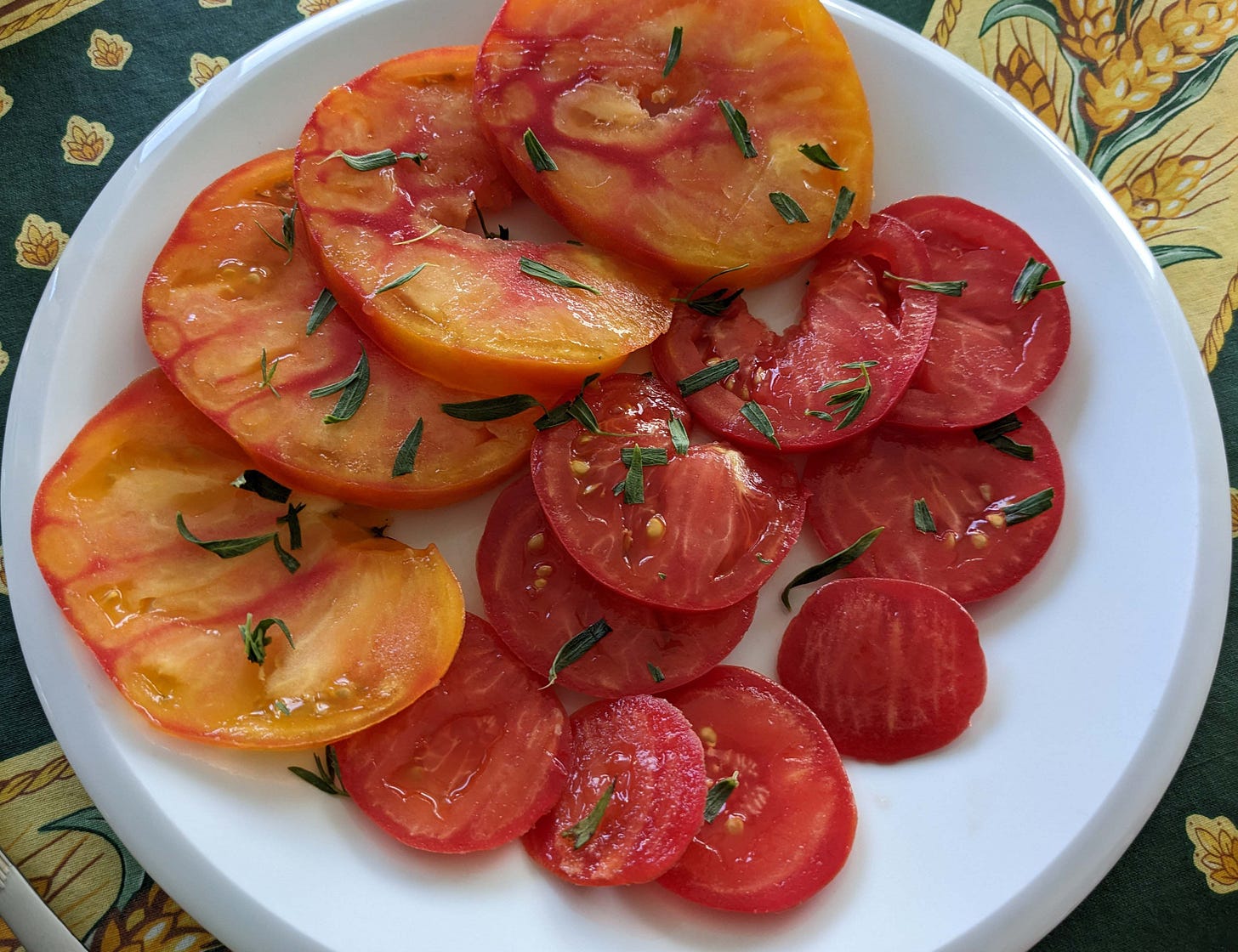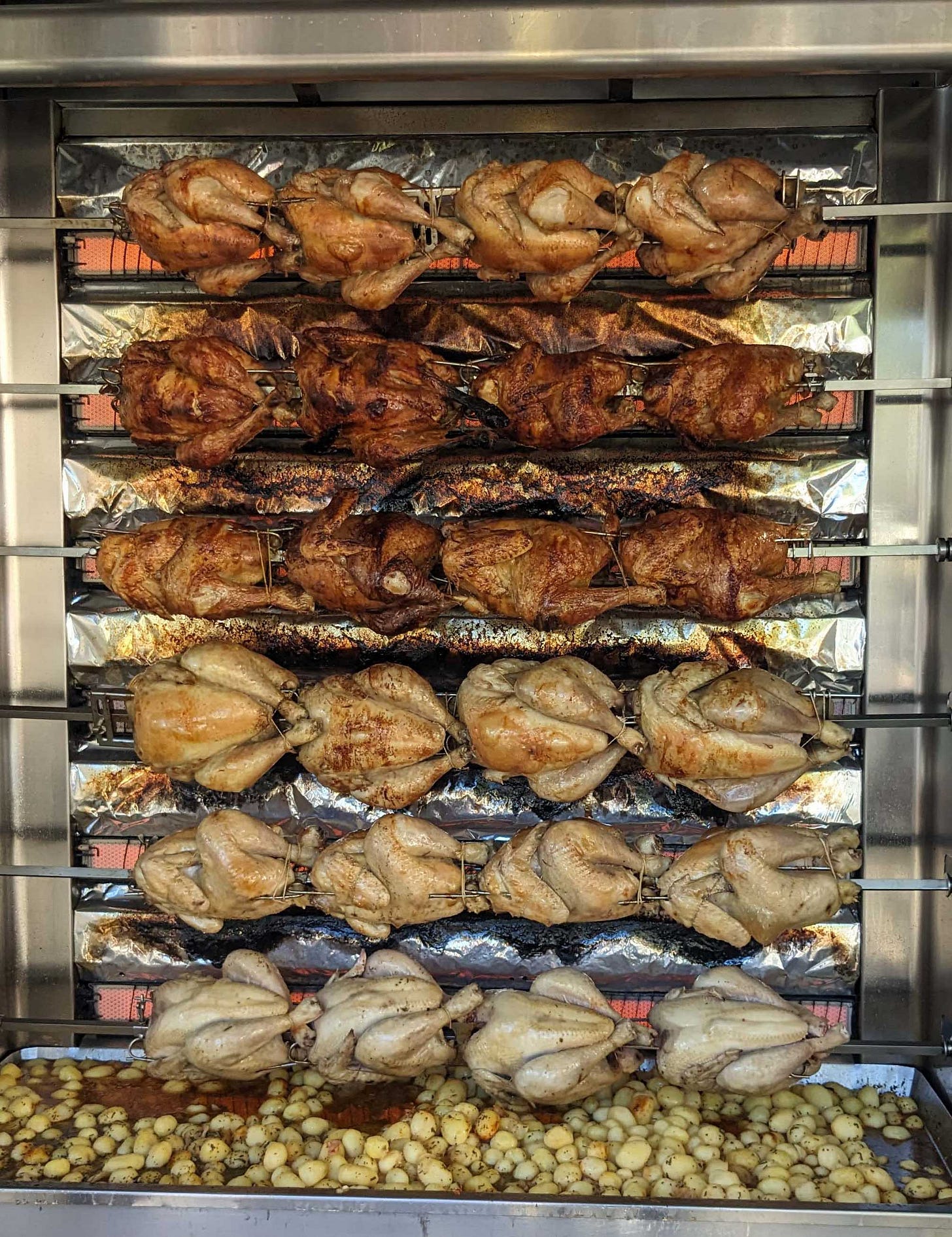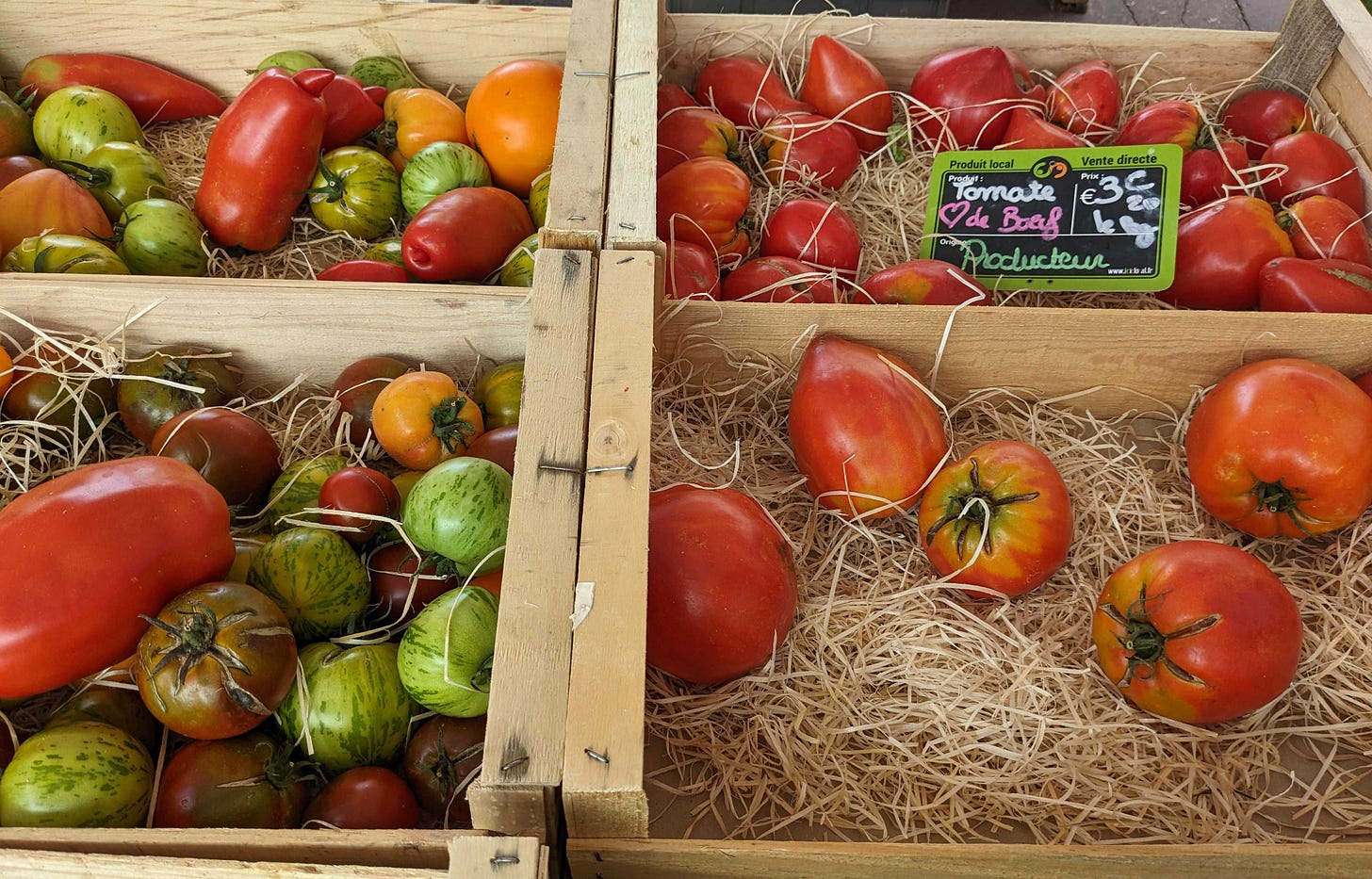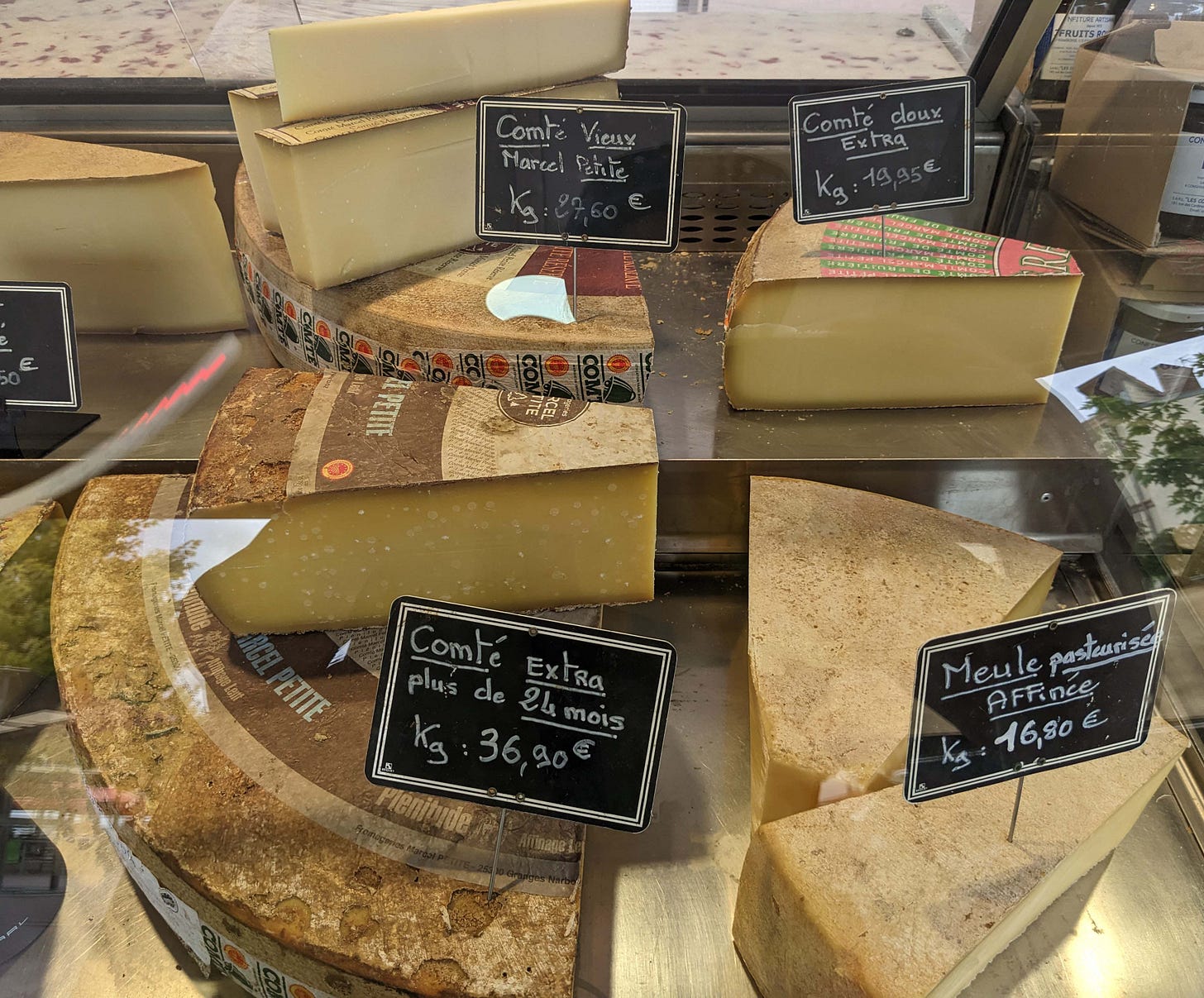I’m going to start with a few entries from the summer, but with three posts per week it won’t take long before we’re in Rome.
There is a wonderful market only ten minutes on foot from our apartment in Lyon, five minutes if I take my bike.
I usually have a list of things I plan to buy, but I also let myself be inspired by what I see. A couple of weeks ago I enjoyed the last plump, dark cherries of the season. This week, it’s so hot that I can’t resist a large quarter of juicy, red watermelon, though it makes me a little wobbly on the ride back with all of the weight in a single bike bag on one side. And every week from early July through September we buy heirloom tomatoes, so delicious that they don’t need any preparation other than slicing, a sprinkle of fleur du sel, a drizzle of olive oil, and an optional bit of tarragon.
The market has a mix of local growers and producers, who advertise that fact with Producteur on their stands, and resellers (revendeurs) who purchase at wholesale outlets. It’s easy to distinguish the resellers by their displays of mangoes, pineapple, bananas, and other things that don’t grow in France. There are two fish sellers, several cheese stands, at least three butchers, and stands with prepared food, everything from fresh pasta to baked goods to rotisserie chickens, cooked in front of your eyes, with the fat dripping onto sizzling potatoes. Around the edges, vendors sell clothing, purses and accessories, and kitchen supplies.
Rotisserie chickens - the smell is almost irresistible. Arrive early if you want potatoes since those always sell out first
Revendeur, or reseller. Technically bananas do grow in France (since islands like Martinique and Reunion are part of France), but they were not produced locally
Among all these choices, I have developed my favorites. I usually go first to my favorite local producteur, photo below, then to my second favorite. If I still need something that neither of them has, I will buy it wherever I see it.
I buy fish every couple of weeks, and my favorite fish vendor will cut me a special piece of fresh salmon for sushi when I ask for it. I almost always stop at my fromager – a word which comes from the French word for cheese, fromage. A fromager sells cheese, but does much more than that: it’s a vocation in France, one that you train for. It involves selecting which cheeses to buy from which producers, keeping them in ideal conditions (which vary according to the cheese), and selling them when they are at their peak flavor. My fromager has both the best aged goat cheese and the best Comté that I’ve ever had – and I have tasted at least 40 versions of Comté, my favorite cheese.
After a few years, I discovered a good strategy for finding the best stands at any market in France: follow the women over 65, waiting patiently in line with their caddies. Retirees are the people who have both the time and the inclination to go regularly to market. Most of them have been coming to the same market for years, or even decades: they know where the best of everything can be found.
On this day in July, I wanted to make zucchini fritters. Zucchini were at their peak, wonderfully fresh, so fresh that they leave a strangely sticky dried film on your hands when you peel them. And they’re dark green and tender. Here in France I’ve never seen the enormous, overgrown zucchini that we get in Minnesota in August, the ones that neighbors sneak onto your porch and leave as anonymous “gifts” when you’re not home.
I use the recipe that I found at Just a Taste, here https://www.justataste.com/5-ingredient-zucchini-fritters-recipe/ and modified for France. It’s very difficult to find scallions in France, except in an Asian grocery store. You can find spring onions, which are just tiny immature onions, but they’re not the same thing and don’t have the same flavor. I’ve found that the best substitute is shallots (I use three large ones in this recipe) and a teaspoon of onion powder, which I bring with me in my suitcase from the US. There is also no sour cream in France, but crème fraiche is an okay substitute, lacking a bit in acidity.
The most important part of the process is to really squeeze the liquid from the grated zucchini, like the first two handfuls in the picture below. You should end up with less than half of your original volume before adding the other ingredients. I also need a little more than 2 tablespoons of olive oil by the time I’m done frying them all. I use a one-fourth cup measuring cup to drop them into the skillet, then flatten them with the bottom of the cup so they cook faster.
My French family loves these. Bon appetit!









